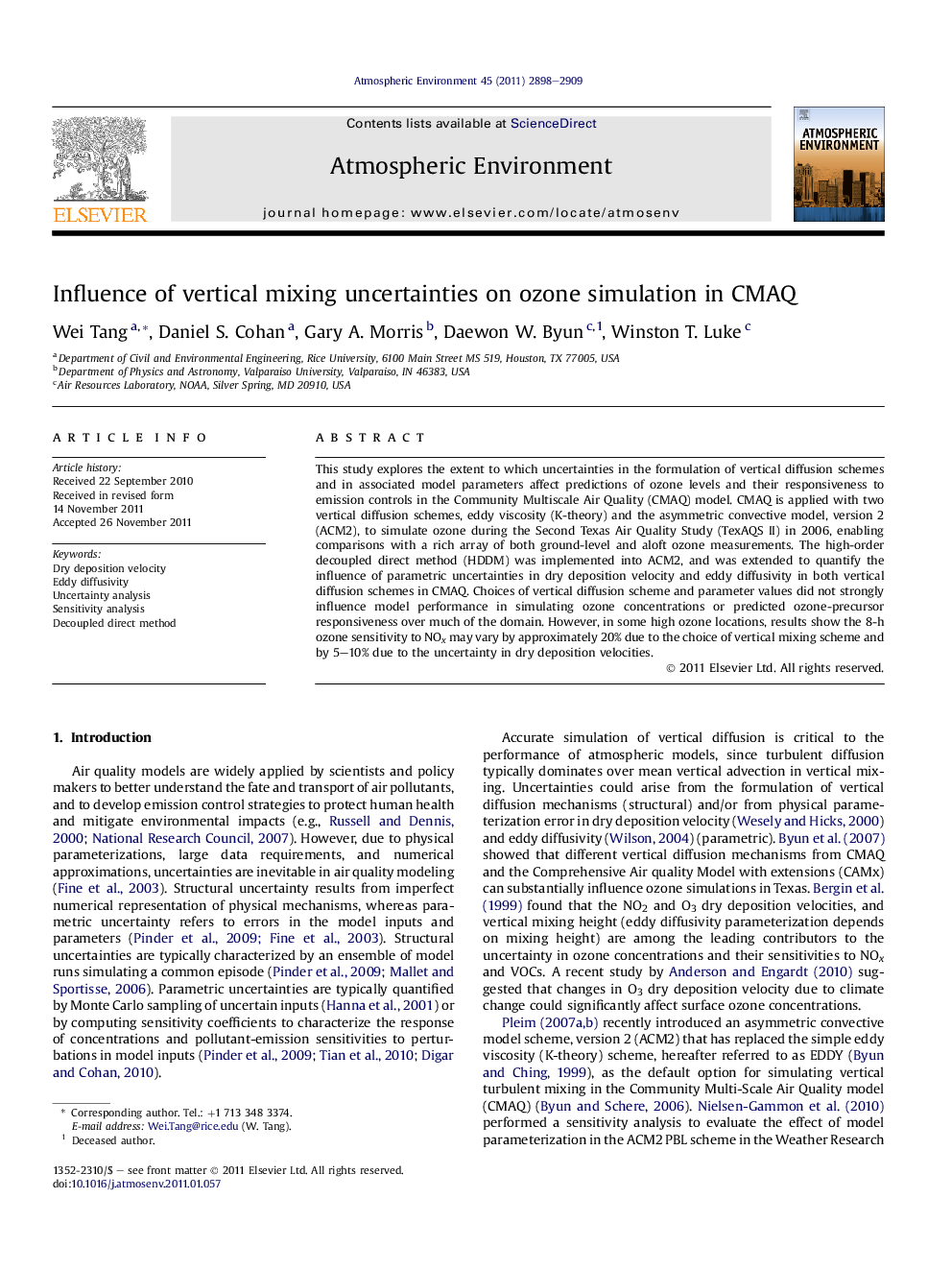| Article ID | Journal | Published Year | Pages | File Type |
|---|---|---|---|---|
| 4440031 | Atmospheric Environment | 2011 | 12 Pages |
This study explores the extent to which uncertainties in the formulation of vertical diffusion schemes and in associated model parameters affect predictions of ozone levels and their responsiveness to emission controls in the Community Multiscale Air Quality (CMAQ) model. CMAQ is applied with two vertical diffusion schemes, eddy viscosity (K-theory) and the asymmetric convective model, version 2 (ACM2), to simulate ozone during the Second Texas Air Quality Study (TexAQS II) in 2006, enabling comparisons with a rich array of both ground-level and aloft ozone measurements. The high-order decoupled direct method (HDDM) was implemented into ACM2, and was extended to quantify the influence of parametric uncertainties in dry deposition velocity and eddy diffusivity in both vertical diffusion schemes in CMAQ. Choices of vertical diffusion scheme and parameter values did not strongly influence model performance in simulating ozone concentrations or predicted ozone-precursor responsiveness over much of the domain. However, in some high ozone locations, results show the 8-h ozone sensitivity to NOx may vary by approximately 20% due to the choice of vertical mixing scheme and by 5–10% due to the uncertainty in dry deposition velocities.
► High-order Decoupled Direct method was implemented into ACM2 scheme. ► Dry deposition velocity and eddy diffusivity parameters were added into HDDM. ► Different vertical diffusion schemes did not strongly influence model performance. ► Ozone sensitivity to NOx varies by 20% due to choice of vertical mixing scheme. ► Ozone sensitivity to NOx varies by 5–10% due to dry deposition velocity uncertainty.
